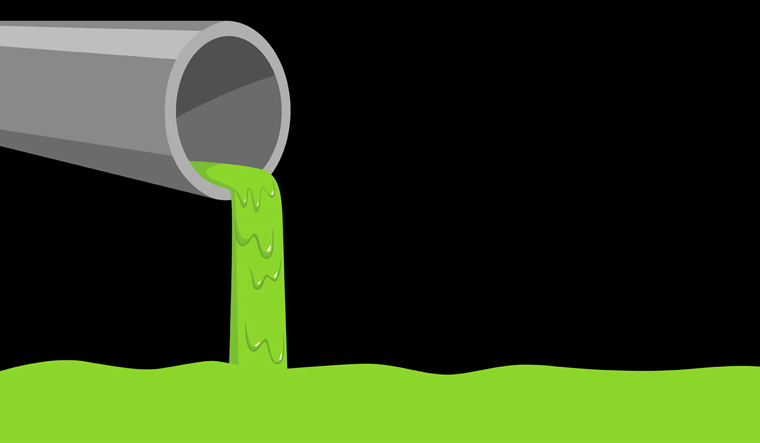Expert Liquid Waste Removal Melbourne: Quick and Affordable Services
Just How Fluid Waste Disposal Works: A Detailed Review of Strategies and Technologies Utilized

Overview of Liquid Waste Kind
The complexity of liquid waste types necessitates a comprehensive understanding of their features and ramifications for disposal. Fluid waste can generally be categorized right into a number of types, consisting of commercial, municipal, farming, and contaminated materials. Each category displays distinct homes, calling for specific monitoring methods to minimize ecological and health risks.
Industrial fluid waste stems from producing procedures and often includes a variety of contaminants, such as heavy steels, solvents, and natural compounds. Metropolitan liquid waste, primarily making up wastewater from households and commercial establishments, includes organic issue, nutrients, and virus (industrial wastewater treatment). Agricultural fluid waste, including overflow from ranches, may consist of fertilizers, chemicals, and animal waste, posturing threats to water top quality and ecological communities
Hazardous fluid waste is defined by its toxicity, sensitivity, or possible to cause harm. This classification consists of substances like acids, bases, and particular chemicals that necessitate rigid handling and disposal procedures. Comprehending these varied liquid waste kinds is crucial for establishing efficient disposal approaches and making sure conformity with ecological regulations. Proper category and characterization are vital for executing appropriate treatment methods and lessening the unfavorable influence on public health and wellness and the atmosphere.
Physical Therapy Techniques

Screening is the first action, where larger bits and particles are gotten rid of from the liquid waste using screens or grates. This procedure safeguards downstream equipment from damages and makes sure smoother procedure. Complying with screening, sedimentation uses gravitational pressure to separate solids from liquids. In sedimentation storage tanks, much heavier bits clear up at the bottom, forming a sludge layer, while the clarified fluid can be additional dealt with.
Filtration is one more necessary method that includes passing the liquid through porous materials, such as sand or membrane layers, to capture smaller fragments. This step enhances the top quality of the fluid, making it ideal for subsequent therapy procedures.

Chemical Therapy Methods
Chemical therapy techniques are crucial for effectively taking care of fluid waste, specifically in attending to dissolved and colloidal contaminants that physical methods may Discover More not effectively remove. These methods utilize numerous chemical agents to counteract, speed up, or change harmful compounds into less harmful types.
One usual approach is coagulation and flocculation, where chemicals such as alum or ferric chloride are contributed to advertise the gathering of suspended fragments. This procedure enhances sedimentation, permitting simpler removal of the resulting sludge. In addition, oxidation procedures, utilizing agents like chlorine or ozone, are utilized to damage down complex natural substances and microorganisms, making the waste safer for discharge or further therapy.
Neutralization is one more important technique, which readjusts the pH of acidic or alkaline waste streams to neutral levels, preventing possible injury to downstream systems and the atmosphere. Additionally, progressed oxidation processes (AOPs) make use of mixes of oxidants and ultraviolet light to degrade relentless contaminants, attaining a higher degree of therapy efficiency.
Biological Treatment Processes
Biological treatment processes play a vital function in the administration of fluid waste by using bacteria to disintegrate organic matter and lower pollutant levels. These processes can be broadly categorized right into cardio and anaerobic therapies, each utilizing visit this website certain microbial neighborhoods to accomplish effective waste degradation.
Cardio therapy includes using oxygen to facilitate the breakdown of natural products by germs. This process is commonly applied in turned on sludge systems, where aeration tanks give a helpful atmosphere for microbial growth, leading to the oxidation of natural contaminants. The resultant biomass can be separated from dealt with effluent with sedimentation.
On the other hand, anaerobic therapy happens in the lack of oxygen, counting on different microorganisms to break down raw material. This method is specifically helpful for high-strength waste, as it generates biogas, an eco-friendly power source, while minimizing sludge production. Technologies such as anaerobic digesters are regularly utilized in industrial and municipal applications.
Both anaerobic and cardio organic treatments not only decrease the ecological impact of fluid waste but additionally help with source recovery, making them essential elements of lasting waste administration approaches. Their flexibility, effectiveness, and effectiveness sustain their prevalent implementation across different fields.
Emerging Technologies in Disposal
Innovative techniques to fluid garbage disposal are rapidly progressing, driven by advancements in modern technology and an increasing emphasis on sustainability. Among these emerging modern technologies, membrane bioreactors (MBRs) have acquired traction for their capability to integrate organic therapy with membrane layer purification, causing top quality effluent that can be reused in different applications. MBRs allow smaller sized footprints and a lot more reliable procedures contrasted to standard systems.
An additional encouraging growth is making use of anaerobic food digestion incorporated with nutrient recuperation modern technologies, which not just deals with liquid waste however likewise generates biogas and recovers valuable nutrients like nitrogen and phosphorus. This dual advantage boosts source effectiveness and minimizes environmental impact.
Additionally, advanced oxidation procedures (AOPs) are being taken on for the destruction of complicated organic contaminants. These techniques utilize powerful oxidants and stimulants to damage down pollutants at the molecular degree, using a highly reliable remedy for challenging waste streams.
Moreover, the assimilation of expert system and artificial intelligence in waste monitoring systems is enhancing operational performance and predictive maintenance, bring about minimized costs and boosted environmental compliance. These modern technologies reflect a substantial change towards even more sustainable and reliable liquid garbage disposal methods.
Conclusion
In conclusion, efficient fluid waste disposal demands an extensive understanding of different strategies and technologies. By continuously advancing these methods, it comes to be feasible to address the growing difficulties linked with fluid waste, inevitably adding to environmental defense and source healing.
Fluid waste disposal is a critical facet of environmental management, requiring an extensive understanding of numerous methods and innovations tailored to various waste kinds. Fluid waste can generally be classified right into numerous kinds, including commercial, article source municipal, agricultural, and harmful waste. Agricultural fluid waste, including runoff from farms, may consist of plant foods, pesticides, and animal waste, presenting threats to water high quality and ecological communities.
Numerous physical therapy approaches play a crucial function in managing fluid waste effectively - industrial wastewater treatment.In conclusion, efficient liquid waste disposal requires a comprehensive understanding of numerous methods and modern technologies